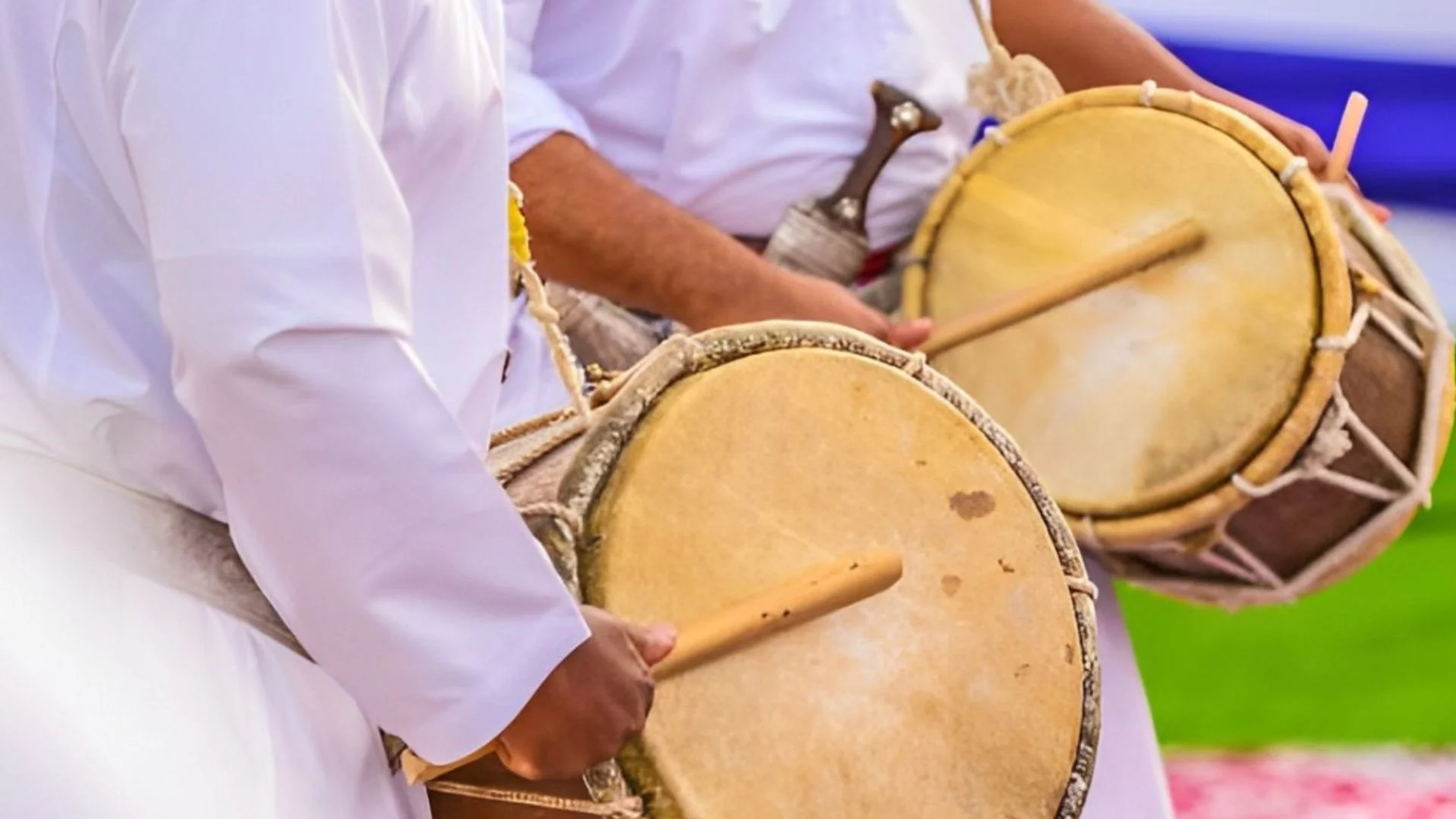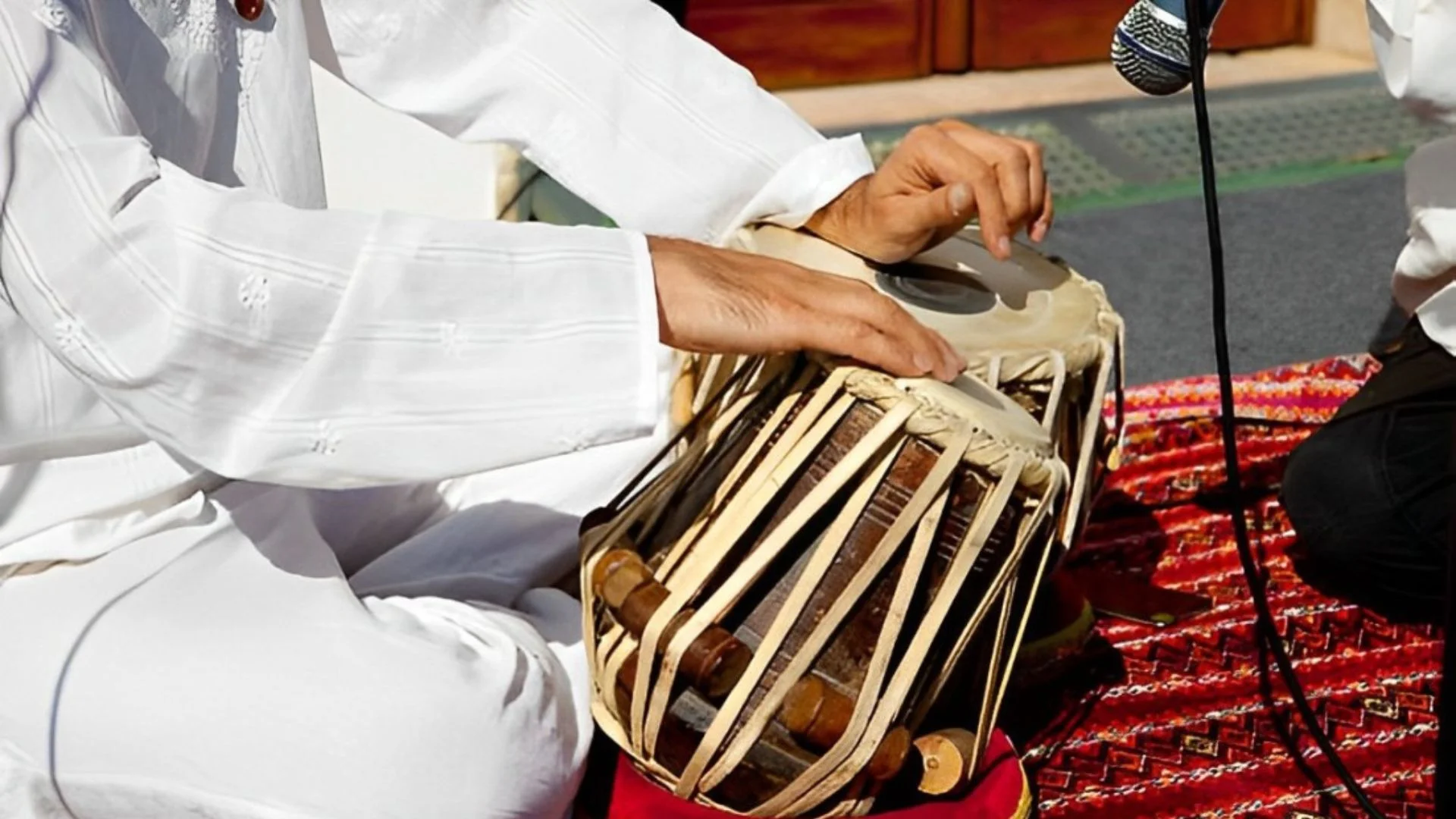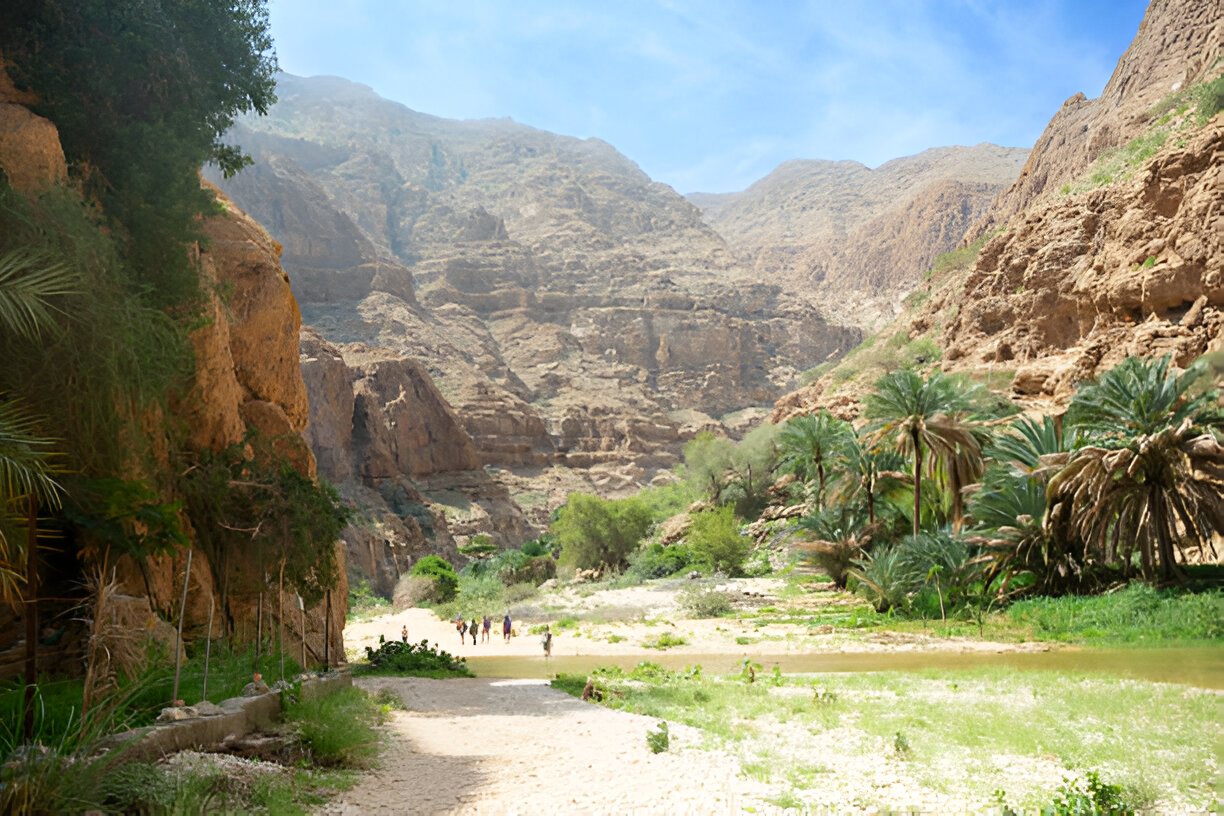

Oman, a country known for its diverse landscapes and rich history, is also a treasure trove of cultural heritage, particularly in the realms of Omani music and dance. The traditions of Omani music and dance reflect the nation’s deep-rooted history, blending influences from Africa, India, Persia, and the Arabian Peninsula, which have been integrated into the local culture over centuries. These traditions are more than just forms of entertainment; they are vital expressions of Omani identity, social customs, and spiritual beliefs.
Omani music has evolved over centuries, influenced by the country’s strategic location on ancient trade routes and its extensive maritime history. Oman’s coastal regions have been particularly influenced by African rhythms and melodies, brought over by traders and sailors from East Africa. Inland, the music has been shaped by Bedouin traditions, focusing on poetry and using specific musical instruments like the oud and the Rabbah.
Oman’s position as a key player in the Indian Ocean trade routes meant that it was exposed to a variety of musical influences. The African diaspora, particularly from Zanzibar, left a significant mark on Omani music, introducing instruments like the tambura and the ngoma. The rhythmic patterns and call-and-response style of African music can be heard in many traditional Omani music styles, especially in coastal areas like Muscat and Sur.
In contrast, the inland regions of Oman were more isolated and developed their own musical styles, heavily influenced by Bedouin culture. Here, traditional Omani music was often linked to poetry and storytelling, with songs preserving history and cultural values from generation to generation.
Religion plays a central role in Omani society, and this is reflected in Omani music. Islamic chants and recitations have a profound influence on the musical landscape of Oman. The recitation of the Quran and the call to prayer (adhan) are integral parts of everyday life, and these religious practices have influenced the tonal qualities and melodic structures of Omani music.
Religious festivals, such as Eid al-Fitr and Eid al-Adha, are often accompanied by specific songs and musical performances that are unique to Oman. These performances are not just about celebration but also serve as a form of worship and community bonding.
Traditional Omani music is characterized by the use of traditional instruments that have been passed down through generations. These instruments are often handcrafted and are considered as much works of art as they are tools for making music.
The oud is perhaps the most iconic musical instrument in Oman. This pear-shaped, stringed instrument is known for its deep, resonant sound and has been used in Omani music for centuries. It is often played as a solo instrument or as part of a larger ensemble in both classical and folk music.
The rababah is a one-stringed instrument commonly used in Bedouin music. It is played with a bow and is known for its haunting, melodic sound. The rababah is essential to traditional Omani music, especially in the interior regions.
The mizmar is a reed instrument, similar to an oboe, used in folk music. It is particularly popular in southern Oman, where it often accompanies traditional dance performances.
The tanbura, associated with the African diaspora in Oman, is a stringed instrument used in Zar ceremonies, which are spiritual rituals believed to cleanse individuals of evil spirits.
Percussion plays a crucial role in Omani music, with various drums like the tabl and Rahmani creating complex rhythmic patterns.

Music in Oman is not just for entertainment; it is vital in social and cultural life. Omani music is performed at weddings, religious festivals, and other social events, often accompanied by dance.
Weddings in Oman are grand affairs, with Omani music playing a central role. Lively songs, featuring drums and traditional instruments like the oud, celebrate the couple’s union.
During religious festivals like Eid al-Fitr and Eid al-Adha, solemn yet joyful traditional Omani music is performed, enhancing the spiritual atmosphere.
In rural areas, Omani music accompanies social gatherings where stories are passed down through songs and poetry.
Dance in Oman is as diverse as its music. Omani dance is performed at celebrations, ceremonies, and festivals, with each region having its unique styles.
Originating in Dhofar, the Al-Bar’ah is a famous Omani dance, performed by men with intricate footwork and swordplay, accompanied by drums and the mizmar.
The Razha, a dance symbolizing strength and unity, involves choreographed sword movements, usually performed at weddings and religious festivals.
Al-Azi combines chant and movement, where a group of men recite poems that praise the tribe and invoke protection.
With roots in African communities, the energetic Lewa Omani dance is performed during weddings and festivals, featuring fast-paced movements and African drums.
Performed by young men in northern Oman, the Shabab is a celebratory Omani dance featuring jumps and quick foot movements, symbolizing the vigor of youth.
Dance in Oman is more than just entertainment; it is a vital expression of cultural identity. Whether performed at social gatherings or religious festivals, Omani dance serves as a means of bringing communities together.
While traditional music and dance remain central to Omani culture, modern influences are shaping the artistic landscape. Fusion music, blending traditional instruments like the oud with contemporary styles, is gaining popularity among young Omanis.
Global music trends such as pop and hip-hop have also influenced Omani youth, with local artists incorporating Omani music elements into these genres.
Platforms like YouTube and TikTok have given Omani artists a global stage to share their work, helping to preserve and promote traditional Omani music.
Cultural festivals such as the Muscat Festival and the Salalah Tourism Festival play a crucial role in preserving and promoting Omani music and dance. These events offer a platform for traditional artists to showcase their talents and educate younger generations about the nation’s rich cultural heritage.
Omani music and dance are integral to the nation’s cultural identity. Despite modern influences, the core elements of these traditions remain strong, thanks to efforts to preserve and promote them. Through education, cultural festivals, and support for traditional artists, Omani music continues to thrive, offering a vibrant expression of the nation’s history and heritage.
Never miss any important news. Subscribe to our newsletter.








Never miss any important news. Subscribe to our newsletter.
Copyright 2024 All About Oman. All rights reserved.